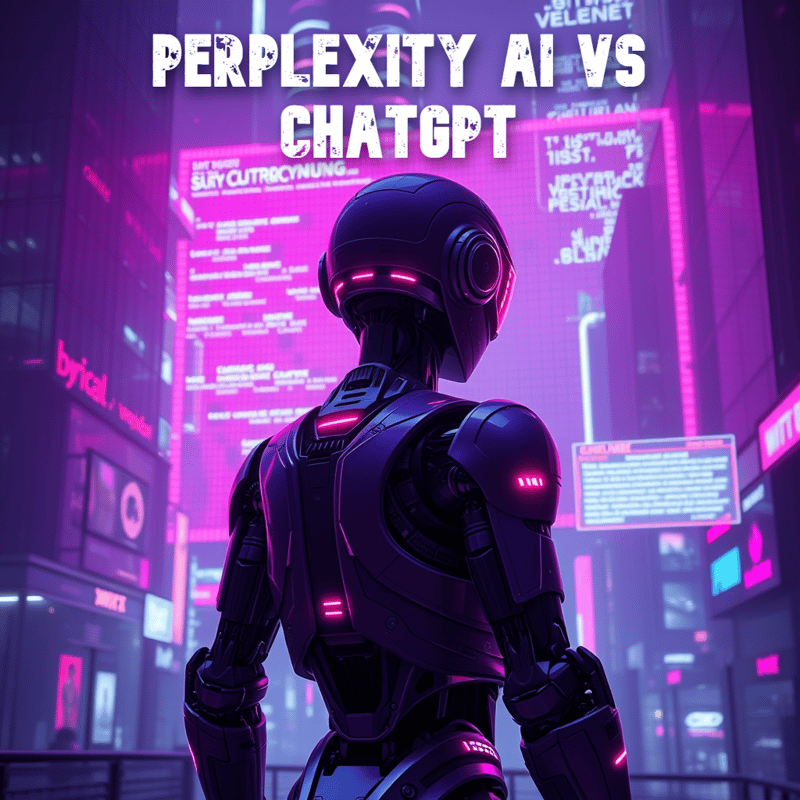Comparing Perplexity AI and ChatGPT: Which AI Tool Suits Your Needs?
In the evolving landscape of artificial intelligence, two platforms have emerged as prominent players: Perplexity AI and ChatGPT. Both leverage advanced language models to assist users, but they cater to different needs and excel in distinct areas. This blog will explore their features, strengths, and ideal use cases to help tech enthusiasts make an informed choice.
Overview of Perplexity AI and ChatGPT
Perplexity AI
Perplexity AI is designed primarily as a search engine that integrates conversational capabilities. It excels at providing precise, real-time information by performing live web searches across various reputable sources. This functionality allows it to deliver up-to-date answers, making it particularly useful for research and fact-checking. Each response includes citations, enabling users to verify the information easily.
ChatGPT
Conversely, ChatGPT is built as a conversational agent, focusing on generating human-like dialogue. It is well-suited for creative tasks such as storytelling, brainstorming, and casual conversation. While it can provide informative responses, its knowledge is based on a pre-existing dataset with a cutoff date, meaning it may not always reflect the most current events or developments.
Key Features Comparison
FeaturePerplexity AIChatGPTPrimary FunctionReal-time information retrievalConversational engagementInformation SourceLive web searches with citationsPre-trained dataset without live updatesResponse StyleStructured and factualConversational and creativeTarget AudienceResearchers, students, professionalsGeneral users, creativesCustomization OptionsSource selection for tailored responsesInstruction-based response customization
Strengths of Each Platform
Perplexity AI
Real-Time Accuracy: By sourcing information from live web pages, Perplexity AI minimizes the risk of outdated data. This is particularly beneficial for users needing current statistics or recent news.
Source Transparency: Each answer is backed by citations from credible sources like academic journals or reputable websites. This transparency builds trust and allows for easy verification.
Advanced Research Tools: Users can upload documents and ask specific questions about them, making it an effective tool for in-depth research.
ChatGPT
Engaging Conversations: ChatGPT excels in generating human-like dialogue, making it ideal for interactive applications where engagement is key.
Creative Content Generation: It can produce stories, poems, and other creative pieces effortlessly, appealing to writers and content creators.
Versatility: ChatGPT can handle a wide range of tasks beyond simple Q&A, including coding assistance and brainstorming ideas.
Limitations of Each Platform
Perplexity AI
Less Conversational Depth: While it offers conversational responses, its primary focus remains on information retrieval rather than engaging dialogue.
Limited Creative Capabilities: Perplexity AI may not be the best choice for users seeking creative writing or brainstorming sessions.
ChatGPT
Outdated Information: Due to its reliance on a static dataset, ChatGPT may provide outdated responses, especially on rapidly changing topics.
Lack of Citations: Without source citations, verifying the accuracy of the information can be challenging.
Conclusion
Choosing between Perplexity AI and ChatGPT ultimately depends on your specific needs:
For Accurate, Real-Time Information: If you prioritize up-to-date answers with source verification—especially for research purposes—Perplexity AI stands out as the better option.
For Engaging and Creative Interactions: If you're seeking a conversational partner capable of generating creative content or assisting with brainstorming, ChatGPT excels in those areas.
Both platforms have unique strengths that cater to different user preferences. By understanding their functionalities and limitations, tech enthusiasts can select the tool that best fits their requirements in the dynamic world of AI.
Remember: The right AI assistant can significantly enhance your productivity and user experience. Consider what matters most for your tasks—be it accuracy, creativity, or conversational engagement—and choose accordingly.
